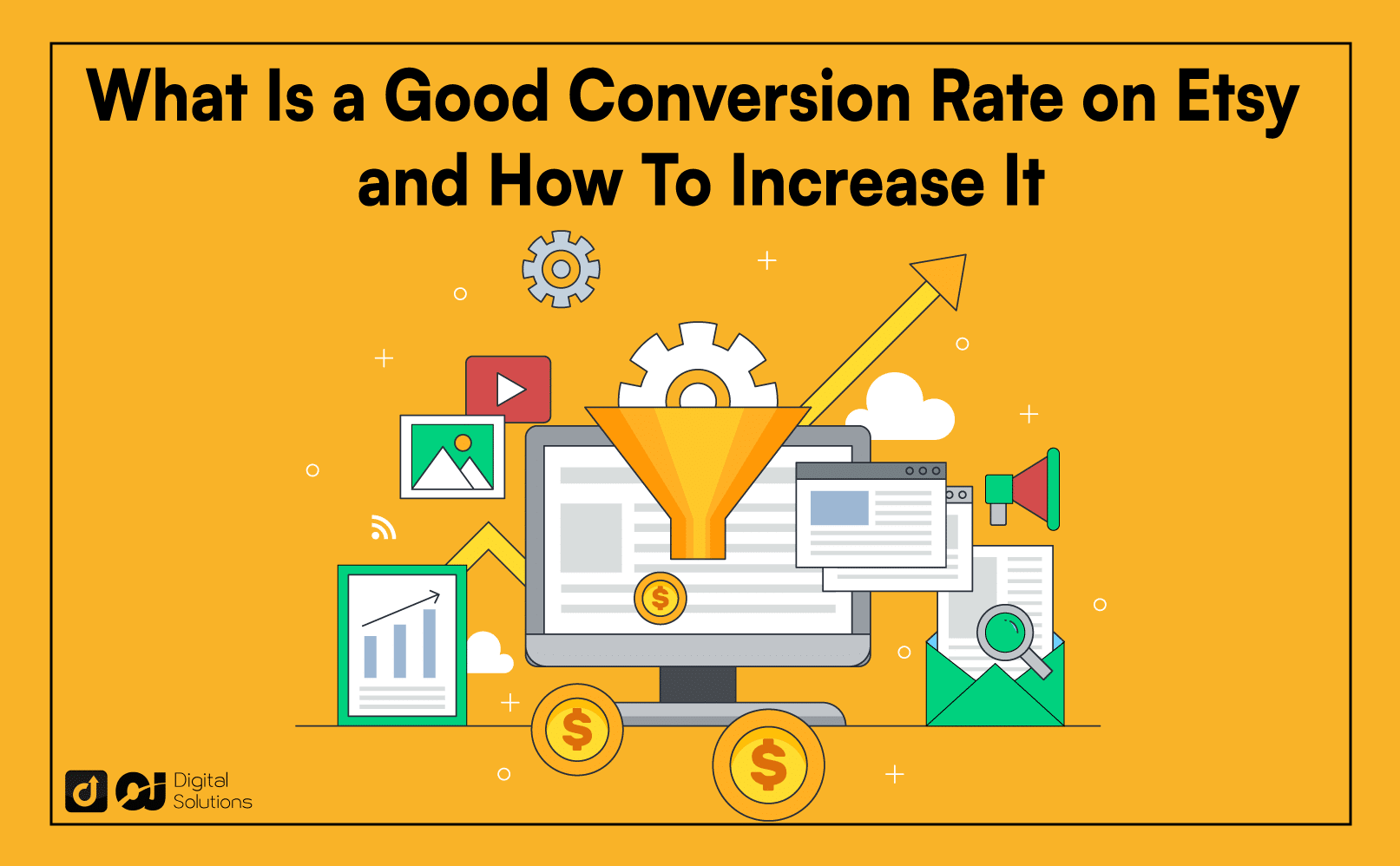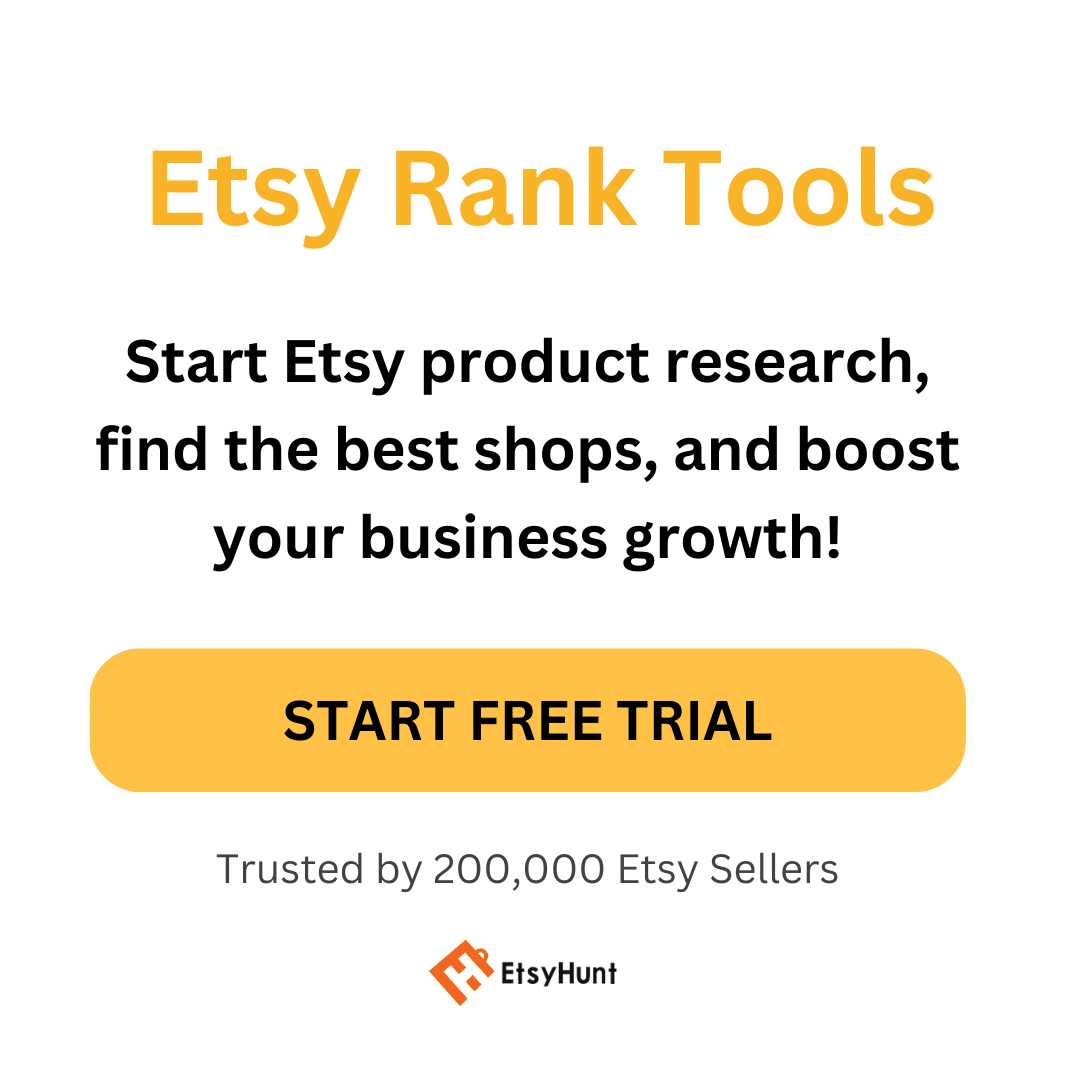Are you an eCom seller wondering what is a good conversion rate on Etsy? Or perhaps you are currently struggling with low conversion rates?
If so, you’re facing a common problem, but you’re not alone. Many Esty shop owners have also struggled with it at one point or another.
Don’t worry because I can help you.
In this post, I discuss what you need to know about Etsy conversion rates, including:
- A good conversion rate on Etsy
- The average conversion rate on Etsy
- How to increase your conversion rate on Etsy
Let’s get started.
What Is a Good Conversion Rate on Etsy?
There’s no clear answer for a good conversion rate for an Etsy shop. The conversion rate from shop to shop varies significantly. Different product categories can also have different conversion rates.
In general, Etsy shops have an average ecommerce conversion rate of around 1 to 3%. This rate has decreased recently due to an increase in Etsy sellers.
When there are more Etsy shops, more people are selling similar products, which impacts the average conversion rate on the platform.
It’s difficult to pin down the definition of a reasonable conversion rate because it involves many factors.
What Factors Affect the Conversion Rate?

If you’re experiencing low conversion rates, look deeper into the following factors:
- Quality of Traffic
If the traffic coming to your Etsy shop isn’t interested in your products, it will lead to low conversion rates. Your target market might be missing your listings because you’re targeting the wrong keywords, which attract the wrong audience. - Product Listing
A poorly-optimized product listing can negatively affect conversion rates. Your description might be lacking some key information, or your images might have low resolution. If your audience isn’t getting what they need to decide to buy your product, they’ll leave the page. - Pricing
Shoppers expect the price to align with your product’s quality and perceived value. If it’s lower than what they expect, they might assume the item has low quality. If it’s higher, they can’t justify buying it. - Listing Quality Score
Etsy’s search algorithm assigns a score based on your listing quality, determining your Etsy search ranking. A listing with a low score will appear farther down on the list, resulting in lower visibility.
In a while, I’ll give you some tips to address these issues.
However, external factors—or factors you can’t control—can also affect your Etsy conversion rate.
For example, algorithm changes on Etsy can affect shops across the whole platform.
Behavioral changes among Etsy shoppers can also influence the conversion rate. A fairly recent example is the COVID pandemic, which drove consumers to online shopping because physical shopping wasn’t an option.
This unpredictability, along with other factors, is why there’s no exact number to signify a good Etsy conversion rate.
What Is Conversion Rate On Etsy, And Why Is It Essential?
The term conversion rate is a marketing metric that refers to the number of visitors you convert into paying customers.
All businesses have specific ways to calculate their conversion rates. Things are no different for Etsy sellers.
Conversion rate is a crucial metric for measuring the success of your sales and marketing efforts and, therefore, the overall success of your Etsy store. After all, Etsy sellers need sales to succeed and grow like any online business.
Higher conversion rates = more sales
How To Calculate Your Etsy Converstion Rate
The general formula for the conversion rate is as follows:
- Total number of sales divided by total number of visits multiplied by 100 = conversion rate
Here’s how to apply this formula to your Etsy product listing:
1- Sign into your Etsy account.

2- Go to Shop Manager, then click the Listings tab.

3- Open the listing stats page of the product you want to calculate. You’ll see the following metrics:
- Views
- Visits
- Orders
- Revenue

4- Note down your Visits and Orders.
5- Divide the number of orders by the number of visits.
6- Multiply it by 100 to get your conversion rate in percentage form.
I’ll explain better in the following scenario.

From the example in this image, we have:
- Visits – 1250
- Orders – 32
We can then do this formula:
- Orders ÷ Visits
- 32 ÷ 1250
- = 0.0256
- x 100
- = 2.56%
Based on the average Etsy conversion rate of 1% to 3%, a 2.56% rate means your product is doing well.
You can calculate your shop’s total conversion rate doing the same way. However, you must get the relevant data.
From the Shop Manager, go to Dashboard, and you’ll see the same stats.

Using Etsy Market Research Tools
If you have a lot of products, you can use Etsy SEO tools to do the calculations for you.
Alura and eRank, for example, gives you a comprehensive view of this metric and other analytics. You can easily compare data and review trends.
They can also help you optimize your Etsy shop further, by using Etsy API to give valuable insights about your shop performance, competitive niches, and product research.
It also helps with researching keywords, which I’ll discuss in detail later.
How To Increase Your Conversion Rate On Etsy
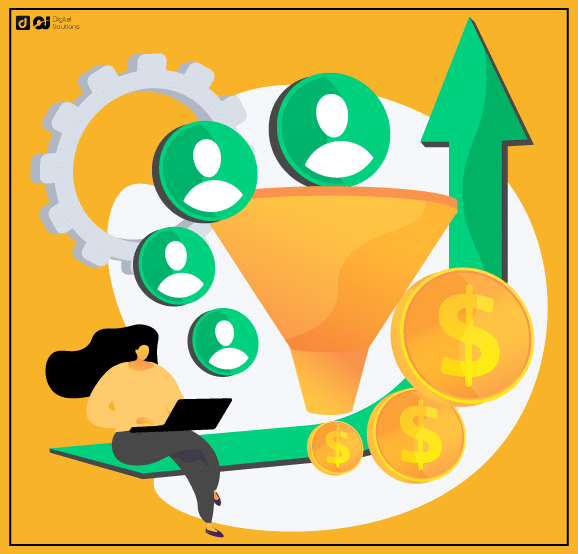
You can have a good conversion rate if more visits lead to a sale. Shoppers use the following factors that contribute to a successful purchase:
- Their purchasing intent. Do they need or want the product enough to buy it?
- The product’s price. Does the price cater to their budget? Does the perceived value justify it?
- Promised solutions. Which of their pain points does your product address?
- Competitiveness. Is your product’s price, quality, and overall value better than competitors?
What’s next is convincing your audience you can fulfill these considerations.
Here are strategies you can try today to improve your conversion rate, boost your Etsy sales, and achieve Etsy success.
1- Improve Your Etsy Listings With High-Quality Product Photos.
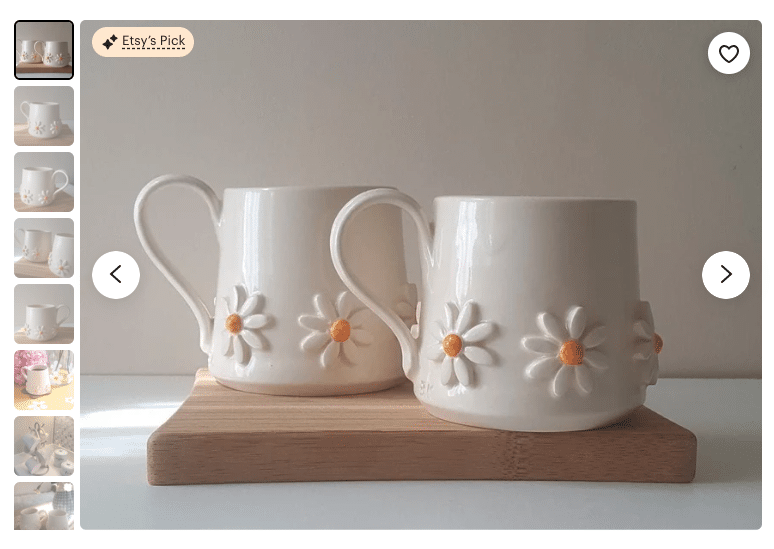
Images are your products’ primary selling point because they’re the first thing people see when they look at your listing.
Shoppers also use images to judge your product’s quality and your shop’s credibility. Potential buyers will think you’re an untrustworthy seller offering subpar products if they check your Etsy listing and see poor-quality images.
Don’t believe me? Look at the evidence supporting the importance of product photography and how it affects a potential buyer’s purchase decision.
- An Etsy survey says 90% of shoppers said photo quality was either very important or extremely important to their buying decision.
- In a separate survey by eRank, 83% of respondents said photos were the most crucial aspect of their Etsy experience.
I’ll let you in on some conversion rate optimization strategies you can implement immediately.
Follow the Image Size Requirements.
Etsy has minimum and recommended listing photo size requirements to help you optimize your product page. These also help buyers, allowing them to get the information they need with visual help.
Add Ten Images.
Etsy lets you add ten images per listing, so take advantage and include up to ten high-quality images in each of your product listings.
Showcase Multiple Angles.
Include high-quality images of your products from multiple angles so customers can see the entire product.
Add Images of Your Products in Use.
Include images of people using your products to give visitors a more concrete idea of your product’s size, texture, and quality.
The great thing about adding high-quality images to your listings is that you can implement the strategy at almost no extra cost—unless you hire a professional photographer.
Check out The Ultimate Guide to Product Photography in the Etsy Seller Handbook to learn more about how to take attention-grabbing images for your listings.
2- Enhance Your Product Descriptions.
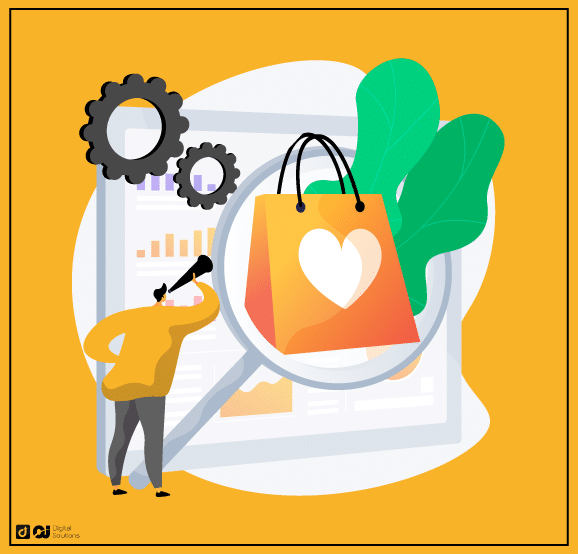
Writing clear and detailed product descriptions is another powerful way to improve your Etsy listing conversion rate.
Accurate, detailed, and concise product descriptions are essential because:
- They help entice visitors into buying your products, converting those visitors into paying customers.
- They give visitors the reasons they should care about your specific products.
- They provide solutions to visitors’ problems, creating a need that can translate to successful sales.
- They improve your SEO if you include all the keywords relevant to your listing.
Here’s how to optimize your product descriptions.
Include as Many Details as Possible.
Remember that customers can’t touch your products or test them in person. Therefore, customers rely on product descriptions to give them the information they need to determine whether or not to purchase your product.
Ensure that you detail all the features of your product in the description to convince shoppers. List details such as the:
- Size and weight
- Color options (if applicable)
- Materials (for items like clothes where people can have different preferences in terms of material)
- Medium (for things like artwork where artists can use a wide range of mediums)
- Instructions for use and care
- Real-life applications
- Benefits
- Specific problems it solves
Product descriptions will differ from category to category. For instance, a description for craft supplies has a different structure than digital products.
Nevertheless, the details above will give you a strong foundation for creating persuasive product descriptions that can increase your shop’s conversion rate.
Be Transparent.
You also have to be honest when writing product descriptions.
Ensure that you also list your product’s limitations along with its benefits. Never claim that your product can do something that it can’t.
You don’t want your customers to feel cheated or deceived.
Be Clear and Concise.
Being clear and concise means making your product descriptions easy to read.
Your product description shouldn’t be one giant wall of text. Break up your product descriptions with short paragraphs and use bullet points to highlight key selling points or elements that make your products unique.
Use the inverted pyramid concept when writing product descriptions to improve customer experience. It’s a content structure where the critical information is at the top or beginning.
Only a small percentage of shoppers bother reading the entire description. Using the inverted pyramid concept ensures that shoppers immediately see what they need to see without scrolling to the bottom of the listing.
Monitor Your Shop Stats.
Stats is where you’ll find an overview of your shop’s metrics, including visits, orders, revenue, and conversion rate.
Keeping an eye on your stats is crucial because it lets you see your shop’s overall performance. Your stats help you pin down specific metrics such as:
- The source of your shop’s traffic (Etsy search, Etsy pages, Etsy ads, offsite ads, etc.)
- Your best-selling items
- Listing stats (How shoppers engage with your listings)
If you improve the description of a particular listing and see a spike in that listing’s popularity, you know that the enhanced product description helped.
Conversely, if you see that listings with poorly written descriptions don’t get much traffic, you know you need to improve those descriptions.
You can find the stats page by logging into your Etsy shop account and clicking Shop Manager.
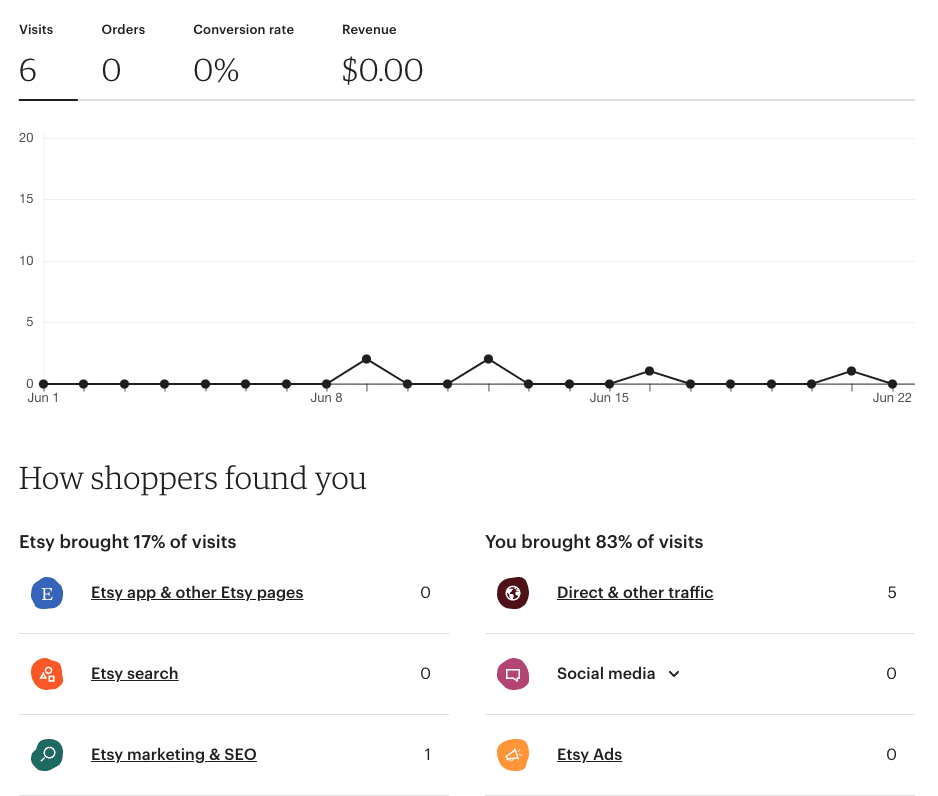
3- Use Etsy Search Engine Optimization Techniques.
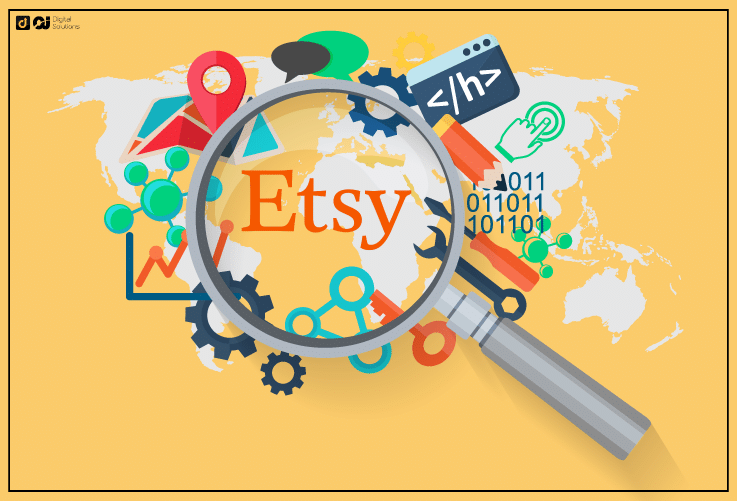
Etsy SEO is another potent strategy for increasing conversions. Etsy is a search engine like Google, and the things you do on Etsy affect your search placement.
Here’s how to improve your SEO on Etsy.
Find the Best Keywords.
Keyword research helps you find the relevant words and phrases that Etsy shoppers are using on the platform. When you target these keywords, you have higher chances of appearing on the Etsy search results page.
In general, you must use popular and high-traffic keywords relevant to your product. However, you must also consider the competition.
When you find the right keywords, your own traffic will be more valuable.
Use Keyword Research Tools.
Using SEO tools can help you find the best keywords. Some popular examples are EverBee and EtsyHunt.
An Etsy keyword tool allows you to enter a broad keyword based on your niche. Most tools will then show you a comprehensive list of related search terms shoppers use to find similar products.
Most tools will also show you the current volume and history of keywords. From here, you can determine which keywords are ideal for your niche.
Etsy SEO software can be free or paid. Take advantage of free trials to test if they fit your needs. You can unsubscribe anytime.
Optimize Listing Titles For SEO.
Keep your listing titles short and snappy; you only have 140 characters for your Etsy listing titles. However, you don’t have to use them all up.
Etsy’s maximum character length for titles gives you enough space to include one or two keywords. Place the focus keyword at or near the beginning of the title, which can help boost your rank and catch the attention of potential customers.
However, avoid overstuffing your listing titles with keywords.
Optimize Other Parts of Your Listing.
You should also use your keywords in the other parts of your listing.
In the description, for example, you can use a mix of short- and long-tail keywords. Insert them naturally; remember that real people will still read it.
You should also pay attention to your image file names and alt text. These aren’t visible on your Etsy shop, but they can indirectly affect your search results ranking.
Ensure to rename the image files with descriptive keywords. Include an alt text, as well, which accurately describes the image.
Search engines use the alt text to better understand the image, potentially improving your score.
Pay Attention to Your Product Tags.

Avoid neglecting your product tags because they can also help your Etsy ranking.
Etsy stores can add up to 13 tags per listing, so don’t hesitate to use all 13 slots. Each product tag can have a maximum of 20 characters you can use to add relevant keywords.
Etsy’s algorithm prioritizes listings with the keyword in both the title and tag over listings with the keyword in just the title or tag.
The quality of your product tabs isn’t just about what you include but also what you leave out.
Ensure that you remove all duplicate tags. For example, if you’re selling a gold necklace and one of your tags is gold necklace, you don’t need to put gold as a separate tag.
You should also remove plural nouns and misspelled words in your product tags.
Use Long-Tail Keywords.
Long-tail keywords are much more targeted than short keywords, so use them often. Insert them into your titles, tags, and product descriptions.
Let’s say you’re a jewelry designer optimizing a listing for a gold necklace with a garnet pendant. Instead of using just gold necklace as your keyword, use gold necklace with garnet pendant.
Remember: improved SEO equals more traffic equals higher chances of converting visitors.
4- Revisit Your Pricing Strategy.

The most common pricing strategy is calculating all the related costs, then adding your desired profit.
However, this doesn’t always work, especially in a marketplace like Etsy. The platform’s emphasis on unique products makes pricing a bit more challenging.
Etsy customers often look more at your product’s perceived value than the price. While they do compare prices, it’s because they’re checking which can give them the best value.
If you’re having no sales on Etsy, your price might be a factor.
Here are some tips to incorporate into your pricing strategy.
Consider Your USPs.
What are you offering that other competitors don’t? Your product might have better-quality material, it might have faster shipping, or it’s customizable.
Did a well-known artist make it? Is it one of the rarest vintage items?
All these are added value, which can justify a higher price tag. Ensure you let your customers know why the added costs are worth it.
Offer a Balanced Price Point.
Your pricing must be competitive, but it doesn’t necessarily mean you must price your products lower than your competitors.
Buyers often associate the price with the product’s quality. They don’t always buy the cheapest one because they’re concerned about the quality or value they’ll receive.
Similarly, you can’t offer your product higher than the average price if its quality isn’t comparable to your competitors.
You must find balanced price points that justify your price while staying competitive.
Offer Occasional Deals.
Sales and discounts are reliable marketing strategies with high success rates. They tap into the psychological factors in consumer behavior, making them feel good about scoring a good deal and getting the best value.
These tactics also create a sense of urgency, making your customers hurry to avoid missing the discount.
However, don’t overdo it. Perpetual sales will raise doubts about your product’s quality and your shop’s reputation.
5- Offer Free Shipping.
Hefty shipping costs can prevent shoppers from completing a purchase. Almost 50% of consumers say that high shipping prices are the main reason they abandon their carts.
Most shoppers wouldn’t buy an item if it meant having to pay the shipping cost. They would rather spend that money on another item.
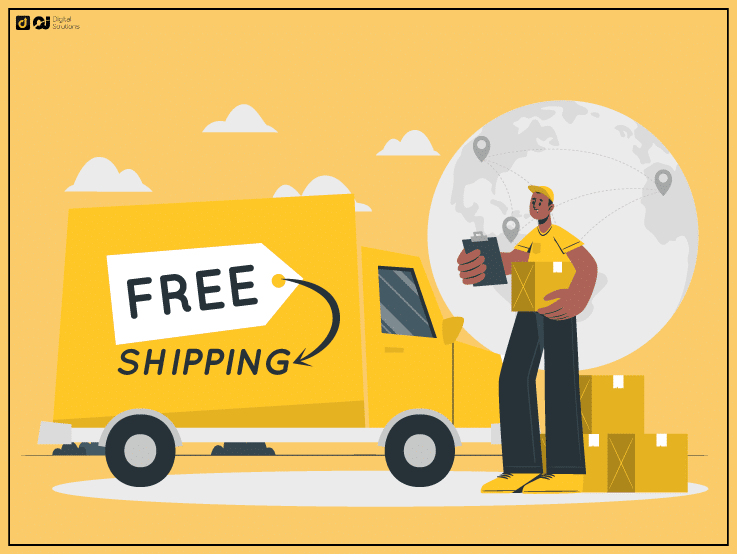
According to a survey by Inmar intelligence, 78% of customers are willing to spend on additional items just to get free shipping. The same study also shows that most consumers don’t mind waiting longer to receive their orders if free shipping is an option.
Free shipping incentivizes customers to buy more and buy more often. Here are some strategies you can try:
- Offer bundle discounts in exchange for free shipping.
- Include the cost of shipping in the item price.
- Offer free shipping to customers who meet a minimum order requirement.
6- Offer a Top-Notch Customer Experience.
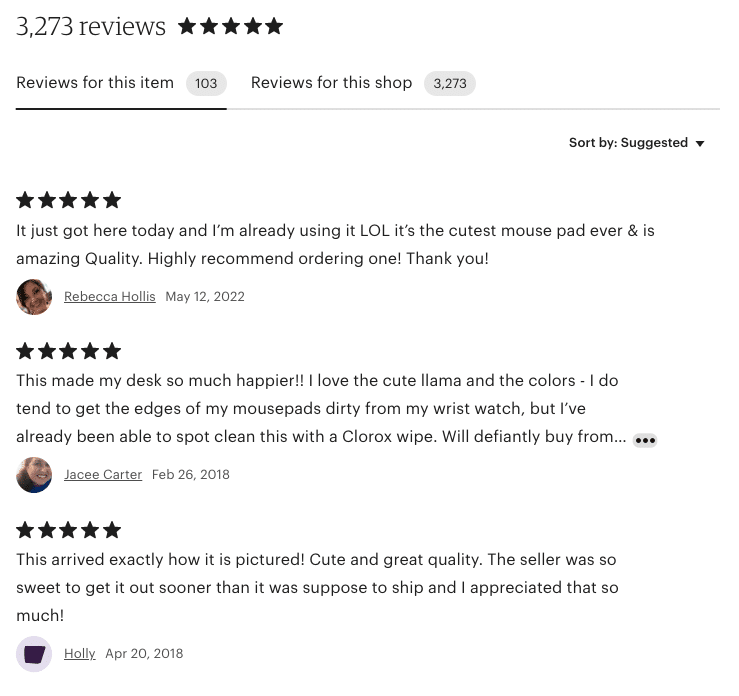
If you foster a good relationship with a customer, they will likely buy from you again.
Customer loyalty is a huge factor in the buying decision. Consumers prefer buying from a brand they trust and have a good experience with.
Your level of customer care can also help set you apart from competitors. Potential buyers commonly save items from different shops and then ask the sellers for more information.
If you’re the fastest one to reply or the most pleasant conversationalist, you have a higher chance of getting the sale than the Etsy seller who’s difficult to talk to.
How can you take care of your customer? Here are some tips:
Respond to Inquiries Promptly.
Address any inquiries or concerns quickly. This helps you build trust, encouraging potential buyers to complete their purchase.
Add a FAQ Section.
The Frequently Asked Questions (FAQ) section helps customers answer their questions. Anticipating the information they need shows you’re attentive to your audience.
Offer Easy Return and Refund Policies.
Etsy allows you to customize your returns and refunds policy. Ensure you make this as hassle-free as possible to give potential buyers peace of mind and extra confidence in buying your product.
Show Your Appreciation.
A thoughtful thank-you note or other personal touches can go a long way in fostering a positive connection with your customers. It’s a small gesture that won’t take too much of your time but has a massive impact on your brand.
Ask for Feedback.
Positive reviews can help boost your shop’s reputation, increasing your chances of converting visitors into buyers.
Some buyers don’t leave feedback, though. It’s optional, so you may have to ask them nicely to review the product and their experience.
You can incentivize a review using an exclusive coupon they can use for their next purchase. Just ensure you don’t sound demanding because it’s against Etsy’s rules.
Remember, repeat purchases are the key to long-term success. In 2021, 81% of all the platform’s transactions are repeat purchases.
The Bottom Line
Now that you’re familiar with Etsy conversion rate optimization strategies, try implementing them today.
I detailed easy, effective, and low-cost techniques to make it easier for you to improve your Etsy shop conversion rate.
However, increasing your sales doesn’t stop with learning how to increase your conversion rates. You must also learn how to promote your Etsy shop properly.

